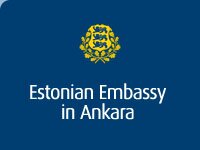Estonia at a Glance 
24.07.2007
Official name: Republic of Estonia
Short form: Estonia
National Day: Independence Day, February 24.
Estonia declared its independence on this day in 1918.
Estonia became a NATO member state on 29 March 2004.
Estonia became a European Union member state on 1 May 2004.
Geography
Area: 45 227 square km
Estonia is a green land, forests cover 50.5% of the country (22 846 square km)
Borders:
Total length: 1 450.2 km, with a sea border of 768.6 km and a land border of 681.6 km
Distances from Tallinn to:
- Helsinki 85 km;
- Riga 310 km;
- St. Petersburg 350 km;
- Stockholm 375 km.
Climate: humid-temperate
Number of islands: 1 521
Largest islands are Saaremaa, Hiiumaa and Muhu.
Estonia is a country of thousand of lakes, largest of these are Lake Peipsi and Lake Võrtsjärv
Highest point: Suur Munamägi (Great Egg Hill), 318 m
Temperature range (average daytime, 1992-2002, EMHI): -2,0°C in winter (may sink to -20°C usually in February) and +19.4°C in summer (may rise to +30°C usually in July).
Population
The last official census was taken in 2000
Population: 1,361 million (Source: Population Register)
Population density: 31 inhabitants per square km
The proportion of urban population in 2006: 69.4%
The proportion of rural population in 2006: 30.6%
The birth rate in 2006 was 11.1 per 1000 residents while the mortality rate reached 12.9 per 1000 residents
Largest ethnic groups: Estonians (69%), Russians (26%), Ukrainians (2%), Belarussians (1%) and Finns (1%)
Main Cities
The capital of Estonia is Tallinn (396.9 thousand inhabitants or 29.6% of total population).
Other large cities and population (thousands):
Tartu - 102.0
Narva - 66.7
Kohtla-Järve - 45.4
Pärnu - 44.1
Language
The official language in Estonia is Estonian which belongs to the Finno-Ugric language family and is closely related to Finnish. Along with Finnish, English, Russian and German are also widely spoken and understood.
State
Type: parliamentary democracy.
Head of the State is the President, who is elected by the parliament or an electoral body. Term: 5 years. Current President: Mr. Toomas Hendrik Ilves, elected by the Electoral Body on September 23, 2006. Next elections: September 2011
National legislature: the Riigikogu. A unicameral parliament of 101 members. Term: 4 years. The last elections for the Riigikogu were held on March 4, 2007
Head of the Government: Prime Minister, currently Mr. Andrus Ansip (Reform Party)
Highest judicial power: Supreme Court
Administrative division: 15 counties, 33 cities and 194 rural municipalities.
Electoral systems: proportional representation. There is universal suffrage for Estonian citizens over 18 years of age. Municipal elections: Term: 4 years. All permanent residents over 18 years old, regardless of citizenship are eligible to vote in municipal elections. The last elections for local authorities were held on 16 October, 2005. Next local elections: October 2009.
Currency
The Estonian Kroon (EEK), 1 Kroon = 100 sents
1 EUR = 15.65 EEK
Education
The number of comprehensive schools is 601, of which 501 are for speakers of Estonian, 74 are for speakers of Russian, 22 schools work in both Estonian and Russian, 2 schools work in English, 1 in both Estonian and English and 1 in Estonian and Finnish.
There are 11 universities in Estonia, including 5 private universities.
Religion
Since the Reformation movement in the 16th century, the Lutheran church has played the leading role in Estonia. Other larger active confessions are: Greek Orthodox, Russian Orthodox, Baptist, Methodist and Roman Catholic.
Sources: Estonian Board of Border Guard, Statistical Office
 Estonia at a Glance Estonia at a Glance
 
|

